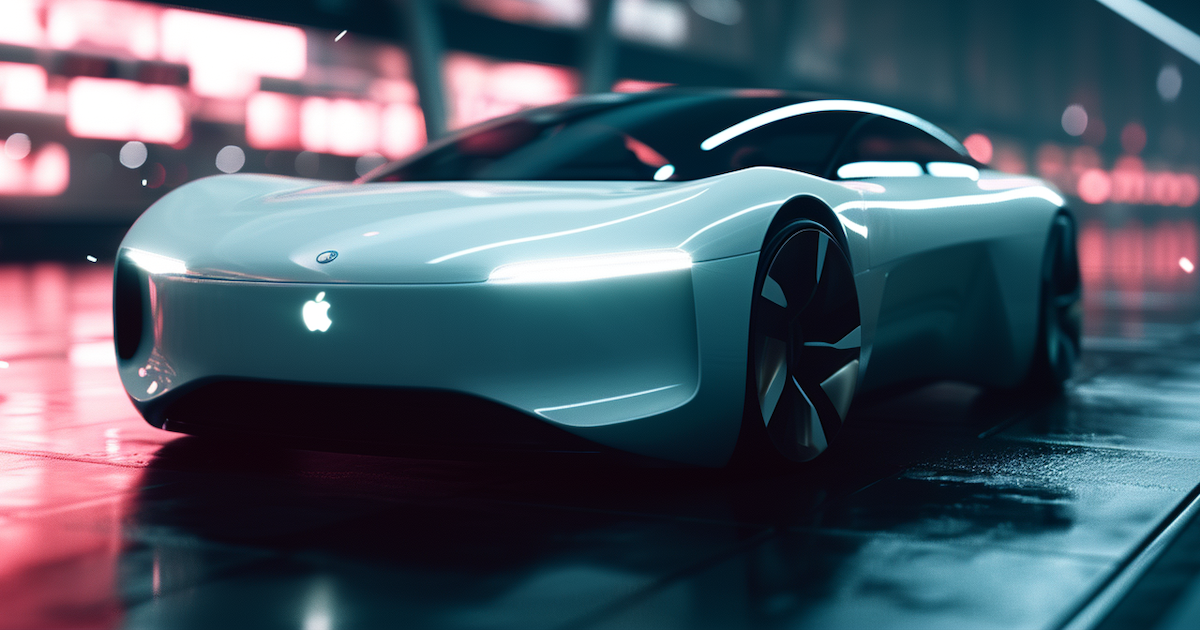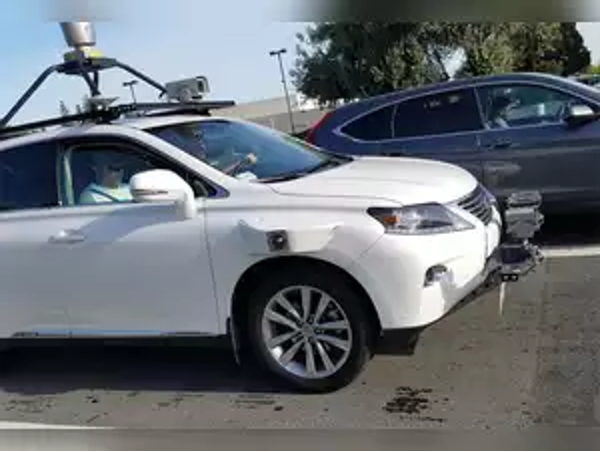
One of the most anticipated products in Silicon Valley over the last 10 years…
Has also been one of the biggest disappointments.
That’s not because the product isn’t great.
It’s because it doesn’t yet exist.
Project Titan got its start back in 2015. Its mission was to design and develop a new electric car with autonomous driving capabilities.
It was a highly secretive project… and it was housed inside of consumer electronics giant Apple (AAPL).
The rumored goal back then was to have Apple’s new electric vehicles (EVs) in production within 5-10 years.
Yet here we are… still waiting.
And it appears we’re going to stay patient… for at least a bit longer.
The latest news is that Apple has now pushed out its previously planned product launch in 2026 to 2028 at the earliest.
For a company like Apple — with a consistent track record of not only breaking into new markets, but defining them — these repeated delays for Project Titan come as a disappointing surprise.
While secretive, Titan wasn’t some small stealth team housed in a remote facility. Thousands of employees have been hired and assigned to Titan, including many executives and engineers that come from the automotive industry.
That meant spending hundreds of millions annually on salaries, resulting in one of the largest investments Apple has made in its history.
And not only does Apple have the talent working on the project, it has an excess of financial resources to spend on research and development… with $30 billion in cash on its books, and another $31 billion in marketable securities that it could sell if it needed more.
It’s not like progress hasn’t been made. It would be hard not to with so many resources focused on a single project.
Apple’s test vehicles have been on the road. I’ve seen one myself.
Back in 2017, when I was living in Silicon Valley, I drove right past one while driving on the 101 expressway.
Here’s what they looked like back then:

They were easy to spot due to the large lidar mount on the top of the car, in addition to the front, side, and rear sensors that were very easy to pick out.
The vehicles were modified Lexus RX450h SUVs.
The make of the car wasn’t of significance back then. The RX450h was a hybrid vehicle with all the EV functionality.
They were production SUVs that were simply modified with sensors and upgraded to operate Apple’s autonomous driving software.
I’m sure some of us are wondering why?
After all, Apple is really good at what it does. As I said in a recent issue of Outer Limits…
Apple’s product strategy has always been consistent.
It never rushes a product to market. It is never first.
Apple waits until the technology is ready for the mass market and is capable of providing an incredible consumer experience.
— Jeff Brown, Outer Limits, Jan. 9, 2024
So why the makeshift cars?
Why would Apple want to enter the market for automobiles? And why electric vehicles?
These are actually the easier questions to answer.
Last summer, Apple became the first company in history to achieve a $3 trillion valuation.
That’s the same valuation it has today.
It’s generated just shy of $300 billion in revenue in the last 12 months ending September 30, 2023.
But revenues declined in its most recent fiscal year by 2.8% compared to the year prior.
The key point is that at this size and scale, it becomes very difficult for a company like Apple to double its annual revenues or more.
That is… without a high-volume product that has a very large sticker price.
Like a car.
If we assume Apple would target the high-end market initially with something similar to the Tesla Model S — let’s say $75,000 — and an annual production volume of 500,000 cars, that would result in $37.5 billion in revenue, plus whatever add-on service revenues that it might be able to drive.
We can make whatever assumptions we want, but the key point is that a successful Apple car would move the needle on Apple’s annual revenues… and its valuation.
As for targeting the EV market, that’s a simple one.
EVs only have around 20 moving parts. That compares to more than 200 for the typical internal combustion engine vehicle.
Being new to the automotive industry, simpler is better. EVs have the ability to remove complexity from the hardware in a car. There are fewer moving parts, which means mechanically, less can go wrong.
And the way for us to look at an EV is as a consumer electronics product.
I know, an EV is really big, and we can’t put it on a shelf, desk, or carry it in our hands. But it really is just a large mobile computing device that has wheels.
Tesla (TSLA) was the first company to understand this.
So one might easily think Tesla already has a major leg up…
As I’ve been writing to readers since at least 2018, Tesla didn’t just design a sleek and cool car.
It designed a software and computing system… around which it built a car.
Tesla collapsed almost every control system in a car into a single touch screen.
Just about anything a consumer wants to do with its Tesla… can be controlled from that touch screen, with the addition of a bunch of entertainment and productivity applications that come pre-installed on every Tesla (like Zoom, streaming music, and games).
Which actually raises an interesting question…
The nickname that some have used for Tesla is the “Apple of the automotive industry.” And it isn’t wrong…
Because what will Apple build now? It seems like Tesla beat Apple to the punch.
After all, Tesla’s user interface in its EVs is simple and intuitive — just like all Apple products.
The design is elegant without any clutter. And every Tesla is designed for our modern lives, down to having a perfect spot to place our smartphones — a spot that also doubles as a wireless charging station.
How will Apple differentiate itself in the industry?
The answer to this question is almost certainly one of the major reasons that Apple has delayed Project Titan again.
Apple has been a very slow follower in artificial intelligence (AI) technology…
So it was no surprise to see that its new 2028 target included lowered expectations for the level of autonomy when driving.
Basically, the target will be a sophisticated version of Level 2 autonomy, capable of self-driving on a highway with lane centering and adaptive cruise control. That’s far less than a Tesla can do today.
Which leaves the design of the Apple car itself, and the user interface, as key points of differentiation.
It is natural to expect that Apple’s iCar operating system (OS) will be tightly integrated with that of iOS on iPhones and iPads, as well as WatchOS on its Apple Watches.
It will certainly provide for a touchscreen panel with a suite of apps… all with the same look and feel that we’re so used to with Apple products.
It’ll be something so easy to use — akin to almost no learning curve for any smartphone user — even a toddler will be able to sit down behind the steering wheel and start driving. (Jokes aside — have you ever seen a toddler interacting with an iPhone for the first time? It’s incredible — totally intuitive.)
And this is a hint about Apple’s iCar product strategy.
The value that Apple brings will come from product design, software integration, user interface design, and managing contract manufacturers to produce the hardware (the EVs) for Apple.
This is the same strategy Fisker (FSR) uses to produce its EVs — which I wrote about on January 16, which can be found here.
Only unlike Apple, Fisker has already entered mass production, a milestone that was achieved in just about six years.
Perhaps not coincidentally, in the past, Apple has had a team of engineers from Magna International working on its car project in Sunnyvale, CA… sworn to secrecy, I’m sure.
Magna is the same automotive supplier that Fisker uses to product the Fisker Ocean in Europe.
And Apple’s largest and most strategic contract manufacturer is Taiwanese manufacturing giant Foxconn. Again, this is the same company that Fisker has been in talks with to begin U.S.-based production of Fisker EVs.
The reality is that Apple needs a leg up with Titan.
And it can’t buy Tesla.
Tesla is one of the very few companies on the planet that Apple simply can’t afford.
But…
It could swallow and integrate Fisker in one breath and get Titan back on track.
It would be an uncharacteristic move for the consumer electronics giant that has always suffered from the “not-invented-here” syndrome.
But Apple is known for acquiring companies for their know-how, teams, intellectual property, and early product development… all of which can all be folded into a much larger, very well-funded new breakthrough product development that Apple is so well known for.
This is a story worth keeping a close eye on…
Because if Apple doesn’t make a big move in the next 24 months, it will find itself boxed out of one of the biggest consumer electronics industries on the planet — EVs.
What do you think of this issue of Outer Limits? As always, we welcome your feedback and questions, and look forward to them. We read each and every email and address common questions in the Friday AMA issues. Please write to us by clicking here.